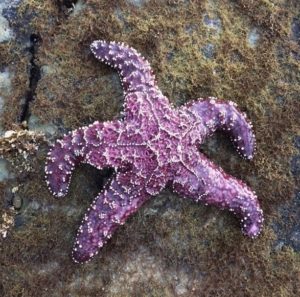Between the Tides
 Tide pool organisms live in two separate worlds, never wholly belonging to either. Between the crashing waves, they have adapted to live both under the tide and exposed on the rocks. These unique circumstances have shaped fascinating creatures, products of their ever-demanding environment.
Tide pool organisms live in two separate worlds, never wholly belonging to either. Between the crashing waves, they have adapted to live both under the tide and exposed on the rocks. These unique circumstances have shaped fascinating creatures, products of their ever-demanding environment.
At first glance, the shore may appear to be a rocky wasteland, however, the rising tide brings new life to the resting landscape, awakening many tide pool animals from their slumber. When exposed to open air, barnacles appear as a lifeless shell, but under the water will open and feed from the incoming water. Likewise, anemones will cover themselves with rocks and shells to shield from the wearing sun, but reveal themselves when under the surface. These creatures, along with many others, have carved out Spartan lifestyles on the shoreline rocks, creating a remarkable ecosystem.
While tide pool animals have adapted to their trying environment, they remain vulnerable to other environmental pressures, such as habitat disturbance and disease. To help protect coastal animals from disturbance, a network of Marine Protected Areas (MPAs) have been established down the California coast. These MPAs, which includes Crystal Cove State Park, establish rules to protect marine and shoreline animals. To help preserve our tide pools, nothing is allowed to be taken, including animals, rocks, and shells, so the tide pool animals can utilize these resources. While MPAs can help defend against disturbance, they cannot defend against disease. In 2013, sea star wasting disease decimated sea star populations in North America. In order to learn about our MPA and track sea star wasting disease, it is key that we monitor our tide pools.
For a chance to explore this unique habitat and help us monitor the health of our tide pools, join us on Saturday December 10th for a tide pool bioblitz, as we try to document as many intertidal species as possible.
Click here for more info and to RSVP.
